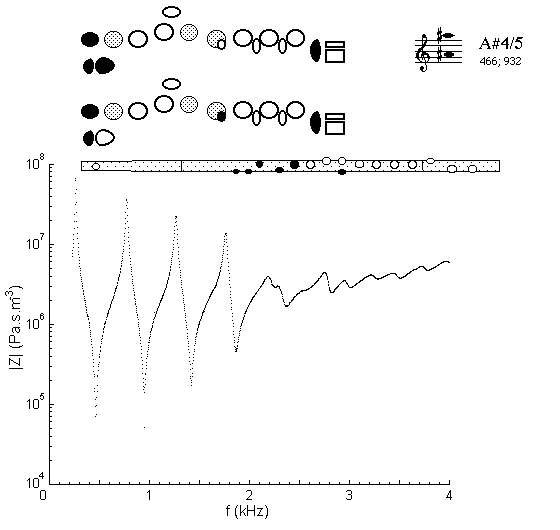| Acoustics of baroque, classical and modern flutes |
modern flute
|
A#4 |

|
Fingering Acoustic schematic Non-specialist introduction
to acoustic impedance |
The flutist uses the same fingering for A#4 and A#5, but changes the speed, length and shape of the jet. The first four minima can be played. These minima support harmonics in A#4. In A#5, only the second and fourth minima are important. The two fingerings given are acoustically equivalent: either the left thumb or the Bb lever is used to close the same hole.
Long Fingering |
modern flute C foot |

|
Fingering Acoustic schematic Non-specialist introduction
to acoustic impedance |
This fingering is sometimes more convenient in rapid passages involving B, A# and other notes. It is, to a small extent, a cross fingering. Compared with the standard fingering, the third impedance minmum is weak, as is the third harmonic in the sound spectrum. The first four minima can be played.
| Acoustic measurements are available for these flutes - modern B, modern C, classical C, classical D, classical flared, baroque Sound clips are available for modern B, classical flared and baroque |
To compare flutes, it is easiest to open a separate browser window for each instrument. |